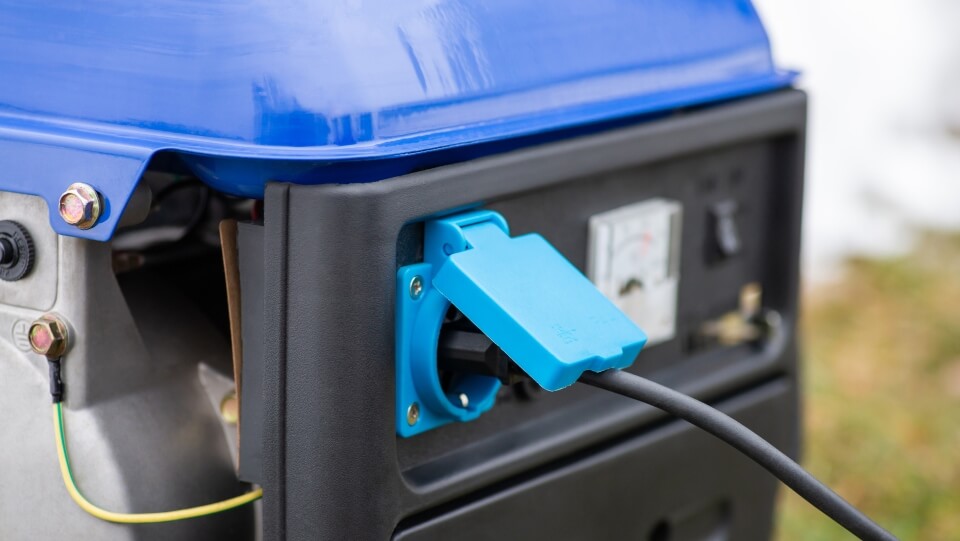Portable generators are excellent alternative power sources for people trying to be more self-sufficient. However, they’re not bulletproof. They still require preventive maintenance and might encounter a few different problems.
Here are eight common issues with portable generators and what you can do to prevent them.
1. Difficulty Starting
Portable generators can have difficulty starting if the air filter is filled with debris. This filter protects the engine from particulate matter, so you must keep it clean or replace it often. It depends on the make and model, but most generators recommend changing the air filter every 150–400 hours of runtime.
A loose spark plug wire is another common reason portable generators refuse to start. Check if the wiring is undamaged and properly installed. If something looks wrong, remove the spark plug and perform a closer inspection. You might need to get a replacement spark plug.
2. Sudden Shutdowns
Portable generators are also known to shut down during operation. First, check the fuel and oil tanks, and make sure they’re full. If the generator still shuts down after refueling and replacing the oil, then the air filter is once again the likely culprit. Air filters protect the generator from overheating.
Replace the filter and move the generator to a well-ventilated area to cool off before running it again. You must prevent your generator from overheating. Overheating often leads to burnt alternators and warped rotors, which would put your generator out of commission.
3. Water Damage
Portable generators don’t perform well in bad weather. Exposure to precipitation can result in damage to the engine and electrical components. It doesn’t take much water to do significant damage, so you need to protect your generator at all times. Fortunately, safety canopies specifically designed for portable generators defend them from the elements.
If you don’t have a safety canopy and need a quick fix, you can also cover the generator with a tent or tarp. Just remember to leave sufficient gaps for air so the generator can release its exhaust and avoid overheating.
4. Fire Hazards
Portable generators can become fire hazards if you don’t properly maintain them. You must do three important things to prevent your generator from catching on fire. First, you must always run the generator at least 20 feet away from all buildings.
The second and third responsibilities involve refueling. Never put gas in your generator while the machine is running or still hot. Turn it off and let it cool down before refueling. You must also store your fuel in a secure location away from any fire sources — including the generator itself.
5. Electrical Hazards
Exposed portable generators don’t stand a chance against electromagnetic pulse (EMP) attacks, which is one of the greatest concerns for survivalists. The only way to protect your generator is by covering it with a blackout bag to stop the EMP currents.
Your generator is also vulnerable to another electrical hazard — lightning. Electrical grids and power lines get struck by lightning all the time, and portable generators are no different. Your generator needs a reliable shelter when storms roll through.
6. Improper Sizing
Sometimes people simply get the wrong-sized portable generators. The generator can be in pristine condition, but if it’s too small and doesn’t have a large enough wattage capacity, it won’t be able to meet your property’s electrical needs. The only solution is to get a bigger generator with greater power output.
On the flip side, using a generator that’s too big can lead to fuel inefficiency problems. Generators must utilize at least 30% of their load capacities or their efficiency will slowly decline. Automobiles experience a similar issue when drivers idle all the time.
7. Fuel Clogging
Fuel clogging is a common problem in portable generators’ fuel tanks. If you don’t let the generator use up all its fuel, it will develop a gum-like residue that clogs the tank. A clogged tank will make your generator less fuel-efficient and might cause it to have trouble starting in the future. If there is a clog, the carburetor might be dry and unable to start the engine.
Always let the tank run completely dry instead of refueling when it’s only half-empty. A clogged fuel tank can also occur if the generator gets exposed to water. This factor is another reason you need to shelter your generator when bad weather rolls through.
8. Carbon Monoxide Poisoning
Carbon monoxide (CO) is an odorless and colorless gas in portable generators’ exhaust fumes. CO poisoning is arguably the most dangerous problem you might face, as it can cause severe brain damage or death after just a few minutes of exposure. You must never operate your portable generator indoors under any circumstances.
Use Your Generator Responsibly
It’s a true privilege to have an independent power generator. Not everyone can lean on an alternative power source when power outages occur. You need to use your generator responsibly and stay on top of preventive maintenance.
You may encounter one of these eight problems, but they all have simple solutions. As long as you perform regular inspections and keep the generator in a stable environment, it will be a reliable power source for years to come.

